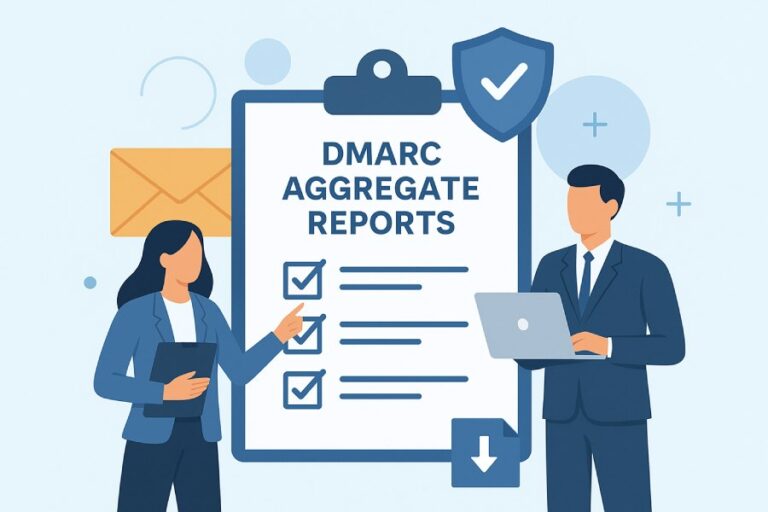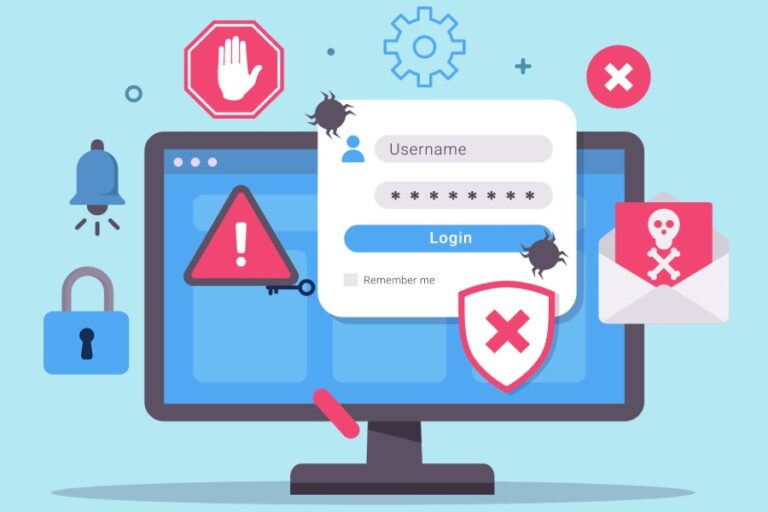DMARC Report Analyzer for Windows: Top Tools to Boost Your Email Security
Email security is no longer just an IT concern—it’s a crucial part of preserving trust and integrity in modern communication. With the rise of increasingly crafty phishing attacks, businesses large and small are realizing that safeguarding their email systems is essential to protect sensitive information and maintain customer confidence. One powerful tool in this digital defense arsenal is DMARC (Domain-based Message Authentication, Reporting & Conformance).
Implementing DMARC may sound technical, but it’s essentially a way to verify your emails so that only the right messages get delivered to your clients. Fortunately, for those using Windows, there’s a whole suite of DMARC report analyzers that can simplify this intricate process. In this article, we’ll dive into why these analyzers are key players in boosting your email security strategy and explore some top tools you can leverage right away.
Several effective DMARC report analyzers can be used on Windows, including DMARC Digests and mxtoolbox.com, which provide essential insights into your email authentication performance. These tools convert complex XML data into human-readable formats, allowing you to effectively monitor and improve your email security.
Why Email Security is Crucial
Email has become a vital communication tool for companies, enabling swift interactions and facilitating transactions across the globe. Unfortunately, this convenience comes at a price: vulnerabilities that cybercriminals are more than willing to exploit. The fact is staggering: nearly 90% of cyberattacks begin with an email. When organizations fail to prioritize email security, they leave themselves open to phishing attempts and other malicious activities that can wreak havoc on their operations.
The potential fallout from inadequate email security is not just theoretical. According to recent figures, businesses can expect losses around $3.86 million per data breach caused by email phishing. These costs include remediation efforts, regulatory fines, and damage to reputation, all of which can lead to long-term financial implications. In fact, approximately 60% of small businesses close within six months following a cyberattack, emphasizing the urgent need for proactive measures.
Every email sent carries risks, especially when sensitive information is involved, such as passwords or financial records. Companies that implement DMARC (Domain-based Message Authentication, Reporting & Conformance) can significantly lower these risks. DMARC works by authenticating emails through SPF and DKIM protocols, helping to prevent impersonation attacks where fraudsters spearhead phishing campaigns by pretending to be legitimate sources.
Phishing attacks have indeed claimed names like Sony and Target as their victims, leading to millions lost and deep scars on brand reputation. These businesses faced not only monetary damages but also the loss of customer trust—a resource that takes years to build.

Given the landscape we’re navigating in today’s digital world, recognizing the importance of email security cannot be overstated. Implementing solutions like DMARC Report Analyzers allows organizations not only to safeguard their communications but also boosts overall email deliverability rates, ensuring messages reach their intended recipients without being intercepted by malicious actors.
As email threats continue evolving in sophistication, sustaining robust defenses against them becomes non-negotiable for any company striving for longevity in the competitive marketplace. Effective email security measures contribute not just to a protected environment but foster a sense of confidence among users who interact with your brand.
With this understanding of why robust defenses are essential for email communication, we can now explore tools designed specifically to enhance these defenses further.
Introduction to DMARC Report Analyzers
DMARC Report Analyzers are indispensable tools that enhance email security. By interpreting complex data from DMARC aggregate XML reports, these analyzers turn intricate technical details into user-friendly insights. This transformation enables system administrators to make informed decisions about email authentication and helps prevent spoofing and phishing attacks. Inside these reports lies valuable information regarding the success and failure rates of email authentication protocols like SPF (Sender Policy Framework) and DKIM (DomainKeys Identified Mail).
The essence of these tools is their human readability; they take the heavy lifting out of interpreting raw XML data. Instead of wading through lines of code and statistics, administrators can quickly grasp significant trends regarding their email activities. For example, they can assess which domains are frequently failing authentication checks or identify specific IP addresses responsible for problematic emails. This level of insight is vital because it helps organizations address issues proactively before they escalate into larger security threats.
John Smith, a network security expert with XYZ Corp, noted: “Using DMARC Report Analyzers has significantly reduced our phishing incidents and improved our overall email security.”
As the complexity of email threats continues to grow, implementing effective reporting mechanisms becomes increasingly important for safeguarding organizations.
Moreover, having access to detailed reports allows for strategic decision-making regarding email policies. Administrators can pinpoint areas where additional training might be necessary for staff, focusing on increasing awareness around recognizing phishing attempts or understanding the implications of poor authentication practices. This multifaceted approach not only helps in immediate threat mitigation but contributes to long-term compliance with industry standards and regulations.
Imagine trying to navigate a maze blindfolded; that’s what dealing with email security without a DMARC Report Analyzer feels like.
DMARC Report Analyzers bring clarity to a previously convoluted process, allowing organizations to enhance not just their security posture but also their operational efficiency. They empower administrators by making the intricate world of email authentication accessible and actionable.
With this foundation laid out, we can now explore how to effectively set up these analyzers for your Windows environment.
Configuring DMARC Analyzers on Windows
Setting up a DMARC Analyzer is straightforward if you follow a structured approach. First, it’s crucial to ensure that your system meets specific software requirements. For instance, applications like DMARCian and Postmark DMARC depend on either Python or specialized components to function correctly. Without these prerequisites, compatibility issues may complicate your installation process. So before proceeding with installation, check for these software dependencies.
Once you’ve confirmed that your system is equipped with the necessary tools, it’s time to move forward to the actual download and installation of your chosen DMARC Analyzer.
Step II – Download and Install the Analyzer
The next step involves downloading the DMARC Analyzer from its official website. When you’re on the site, look for the download button—it should be prominently displayed—and click on it. Carefully read through any prompts or instructions that appear. Installation typically involves accepting terms of service and choosing your installation preferences, such as where to place the program files. It’s vital not to rush through this stage; a misstep can lead to future hassles in finding or launching your analyzer later.
After you’ve successfully installed the tool, you’ll find yourself at the configuration stage—this part is key because it tailors the analyzer to meet your specific needs.
Step III – Setup and Configuration
Upon launching the DMARC Analyzer application for the first time, you’ll notice prompts guiding you through the initial setup process. You’ll need to input several types of information, including your domain name, server settings, and essential DMARC report email addresses. These details are critical as they define how the tool collects data relevant to your email activities.
Each analyzer might have slightly different requirements or interface layouts, so take a moment to review the documentation provided with your tool. This ensures accurate configuration and maximizes what the DMARC Analyzer has to offer.
An important reminder: Pay close attention to how you format these details—one misplaced character could hinder authentication processes downstream!
Now that you have everything configured correctly, it’s essential to focus on effectively analyzing the DMARC data to gain insights into your email’s security performance.
How to Interpret DMARC Data
When you dive into your DMARC aggregate XML reports, it might seem daunting at first glance. However, once you focus on the right elements, the complexity starts to fade away. The first thing to notice is the Source IP, which tells you where the email originated. This information is crucial because if you see multiple failed messages coming from a single IP address, it could raise a red flag, suggesting a possible phishing attempt or unauthorized access pattern needing immediate attention.
Next up is DKIM Alignment. This metric checks whether the DKIM keys associated with your email align with your domain’s policy. If discrepancies exist, it indicates an authentication failure that could allow malicious actors to spoof your domain. Similarly, examine SPF Alignment, which verifies whether incoming emails are sent from an IP authorized in your SPF record. A lack of alignment can lead to legitimate emails being marked as spam or rejected altogether.
These metrics collectively tell a story about your email security posture, revealing how effective your authentication protocols are working in practice.
Equally important is the Disposition metric. This indicates what actions were taken regarding incoming emails: whether they were delivered successfully, quarantined for further analysis, or outright rejected. Keeping an eye on this metric over time can provide insights into trends in attempted breaches or misconfigured settings that need rectifying.
- Source IP: Identify where unauthorized attempts might come from.
- DKIM Alignment: Ensure proper signing and authorization of outgoing emails.
- SPF Alignment: Verify compliance in mail delivery.
- Disposition: Understand how many emails were allowed through versus those flagged for issues.
By regularly interpreting these key metrics, you create a proactive approach to managing email security—it’s not just about setting up DMARC; it’s about continuously optimizing and responding to emerging threats.
As organizations increasingly adopt DMARC protocols to enhance their defenses against spoofing and phishing attacks, the ability to interpret data meaningfully becomes ever more critical. Having insight into these reports empowers users to adjust strategies accordingly and implement necessary changes, fostering a safer email environment for everyone involved. Keeping tabs on performance metrics not only protects your organization but also strengthens trust with clients and partners who rely on secure communications.
With this understanding of metrics in hand, we can now explore the specific advantages that these tools bring to enhancing email security and overall communication integrity.
Key Advantages of DMARC Tools
One of the most significant benefits of deploying DMARC tools is enhanced security. These tools serve as a protective barrier, preventing unauthorized emails from being sent under your domain. This means threats like email spoofing, a malicious tactic where fraudsters impersonate a legitimate sender to trick recipients, are directly mitigated. In fact, according to industry data, organizations can reduce phishing attacks by up to 80% when DMARC is correctly configured. Imagine the peace of mind that comes with knowing fewer deceptive emails are making their way into your clients’ inboxes.
But security is only part of the equation; there’s also the growing value of increased trust in your communications.
With robust DMARC implementation, recipients can easily verify the legitimacy of an email they receive from your organization. When users see that you have taken steps to secure your email traffic, they are more likely to believe that those messages are genuine. This boosts not only recipient confidence but also helps significantly enhance your brand’s reputation. Research shows that around 90% of companies witness an improvement in brand perception after implementing DMARC protocols.
With both improved security and heightened trust established, organizations can also enjoy greater visibility into their email traffic.
By utilizing DMARC tools, you gain comprehensive insights into how your corporate domain is being used—or potentially abused. You’re empowered with reports detailing authentication rates via SPF (Sender Policy Framework) and DKIM (DomainKeys Identified Mail) methods. This visibility allows you to monitor unauthorized use of your domains and quickly identify any irregularities or breaches, ensuring prompt corrective action.
Moreover, these advantages often translate into tangible financial benefits.
Companies that implement DMARC effectively can save considerable amounts—an average of about $1.5 million annually—by reducing incidents of email fraud and its associated costs. Whether it’s through decreased investigation time for incidents or preventative measures leading to fewer lost business opportunities, the cost-effectiveness of this protocol cannot be overstated.
As we see, adopting DMARC not only strengthens your email defenses but enhances overall operational efficiency as well.
Additionally, DMARC can assist organizations in meeting compliance requirements regarding email security standards; about 75% of companies find their adherence to industry regulations improves following its deployment. Integrating DMARC tools into your email strategy isn’t just a technical enhancement; it’s a critical step towards securing your digital communications while fostering trust and saving operational costs across the board.
With these compelling advantages in mind, let’s explore some top solutions that effectively aid in managing these improvements seamlessly.
Top DMARC Analyzers for Windows OS
Different DMARC analyzers offer various tools that can significantly impact your email security strategy, which is why knowing what they bring to the table is essential. Among these, DMARCLY stands out as a user-friendly solution that simplifies onboarding with automated DMARC setup. This makes it particularly appealing for small businesses wanting to implement strong email defense without a steep learning curve. Its affordability also gives it an edge over competitors, making it a favorite.
Meanwhile, Postmark DMARC has carved its niche by providing a free service option for existing users yet still packs enough punch for small enterprises seeking quality and functionality. The weekly digests of alignment stats keep users informed about their email authentication efforts, easing what could otherwise be a complex process.
On the other hand, larger organizations may find Valimail Monitor apt for their extensive needs. Its automation capabilities streamline processes effectively—reducing manpower while enhancing security—making it ideal for enterprises with high-volume emailing demands. Then there’s mxtoolbox.com, renowned for its reliability and ease of use, appealing to both newcomers and seasoned professionals who appreciate straightforward analytics without unnecessary frills.
It’s true; using mxtoolbox feels like walking into a tidy little café where you can get your favorite coffee served just right—no surprises, just solid performance!
However, with great features come some considerations. For instance, while OnDMARC by Red Sift provides dynamic SPF management and actionable insights from complex forensic reports through effortless deployment, some users may find its scalability limited compared to alternatives. This is particularly pertinent for growing businesses that anticipate rapid expansion.
As we assess these tools, it’s important to remember each has unique strengths; thus, aligning your choice to specific business requirements ensures effective results. While some setups might suit large-scale corporate environments perfectly, others may resonate more with smaller teams or startups building their email infrastructure from scratch.
Prioritizing the features that matter most will help you navigate this journey more smoothly as you enhance your email defense strategies against potential threats.
Features to Consider in DMARC Tools
Not all DMARC tools are created equal. Identifying features that genuinely enhance user experience and security can significantly impact how effectively you monitor your email authentication processes. A user-friendly interface is often one of the first things to look for—if the tool feels intuitive, it allows you to navigate through complex data without feeling overwhelmed. This straightforward design enables administrators to quickly grasp critical information about their email systems, helping them make informed decisions rapidly.
Customizable alerts are another vital feature to prioritize. Imagine receiving a sudden spike in authentication failures; customizable alerts ensure you’ll be notified immediately. These notifications can highlight unusual activity, allowing you to respond quickly and proactively mitigate potential threats. The faster you act, the less chance there is for malicious actors to exploit weaknesses.
Feature I – User-Friendly Interface
A clean, well-structured user interface (UI) is essential when dealing with DMARC reports. The more accessible the interface is, the easier it will be to translate complex XML data into readable formats. Furthermore, various tools offer varying levels of complexity; hence, choose those that balance detail with simplicity to fit your team’s ability.

Feature II – Customizable Alerts
Moving forward, let’s emphasize customizable alerts’ crucial role in maintaining email security integrity. For instance, some tools allow you to set thresholds for what constitutes “unusual activity.” By having alerts tailored to your domain’s specific traffic patterns, you equip yourself with heightened awareness and responsiveness without compromising your time on routine monitoring.
Feature III – Detailed Reporting
Finally, a robust reporting feature is essential for gaining valuable insights into your email ecosystem. Tools that provide detailed analytics not only help you understand current authentication rates but also reveal trends over time. With such insights available at a glance, it’s easier to adjust strategies as needed.
In examining these tools, it’s helpful first to explore the following comparison table:
| Feature | Importance | Examples |
| User-Friendly UI | High | DMARCLY, Postmark DMARC |
| Customizable Alerts | Medium | mxtoolbox.com, Valimail |
| Detailed Reporting | Critical | DMARCLY, Valimail |
Considering these features will ensure that you get the most out of your chosen DMARC analyzer while fortifying your organization’s email security posture against increasingly sophisticated threats.
Incorporating these considerations into your decision-making process will lead you toward choosing an effective DMARC report analyzer that meets your needs. Take actions now to protect your email infrastructure effectively and stay ahead of potential threats.
How frequently should I review my DMARC reports to ensure proper email authentication?
You should review your DMARC report at least weekly to ensure proper email authentication. This frequency allows you to promptly identify any unauthorized access attempts or misconfigurations, potentially preventing malicious use of your domain. According to studies, organizations that regularly monitor their DMARCReport see a 90% reduction in phishing incidents against their domains, highlighting the effectiveness of diligent monitoring in maintaining email security.
What features should I look for in a DMARC report analyzer for Windows?
When selecting a DMARC report analyzer for Windows, look for features such as user-friendly dashboards, customizable reporting options, real-time monitoring capabilities, and automated alerting systems. These functionalities enhance your email security posture by facilitating quick responses to potential threats. Additionally, statistics show that companies employing robust DMARC analysis tools can reduce their phishing incidents by up to 90%, underscoring the importance of choosing the right solution for effective email protection.
What steps should I take after analyzing my DMARC reports?
After analyzing your DMARC reports, the essential steps to take include adjusting your SPF and DKIM records based on the findings, identifying any unauthorized senders that might be impersonating your domain, and progressively tightening your DMARC policy from “none” to “quarantine” or “reject” as you gain confidence in alignment. According to studies, organizations that implement a DMARC policy can reduce phishing attacks by up to 80%, demonstrating the effectiveness of these actions in enhancing email security.
Are there any recommended tools or software compatible with Windows for analyzing DMARC reports?
Yes, there are several recommended tools for analyzing DMARC reports on Windows, such as DMARC Analyzer, Agari, and Postmark. These tools help streamline the interpretation of DMARC data, offering features like visual dashboards and automated reporting. According to a study by the Internet Security Foundation, organizations using dedicated DMARC analysis tools saw a 30% reduction in phishing attempts and improved email deliverability rates by up to 40%. By utilizing these advanced tools, businesses can significantly strengthen their email security posture.
How can I interpret the results of a DMARC report effectively?
To interpret the results of a DMARC report effectively, focus on three key components: the “policy” applied (which dictates how to handle unauthenticated emails), the “aggregate reports” (providing insights into email flows and authentication results), and the “forensic reports” (detailed information on failed messages). Start by assessing the percentage of messages passing DMARC checks, which—according to recent studies—can enhance email deliverability rates by up to 30%. Use tools that visualize this data for easier analysis, allowing you to promptly identify any discrepancies or unauthorized use of your domain.







